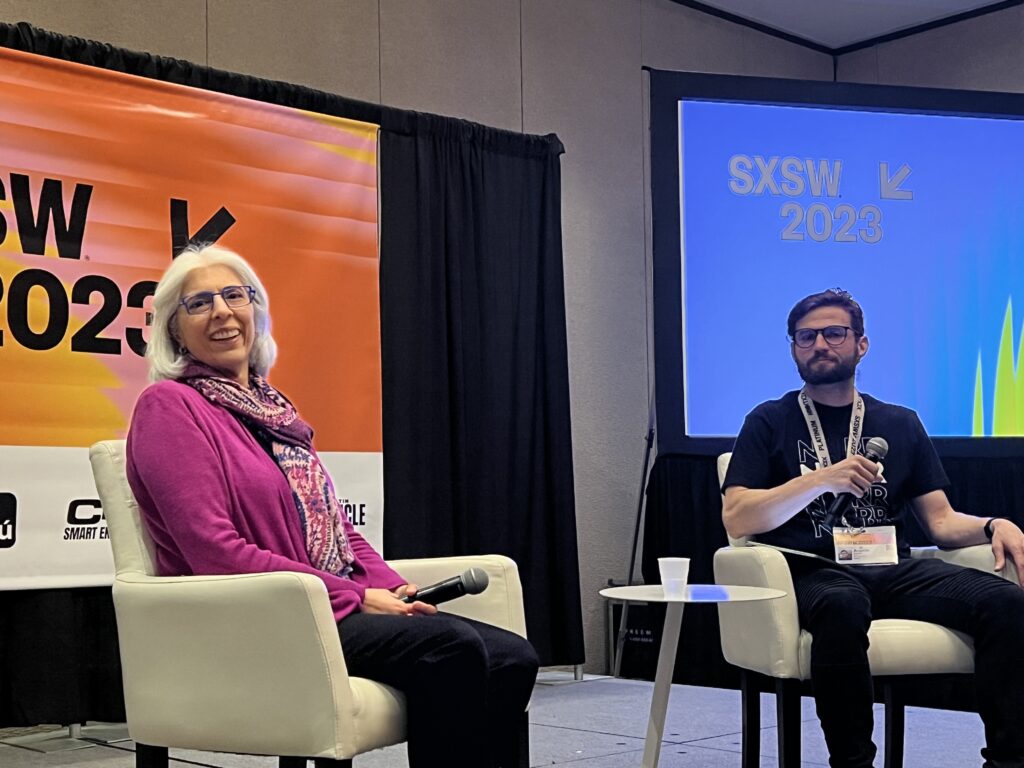
In California in the early ‘90s, a man bought a ketchup bottle, and when he got it home, he found that it contained less ketchup than the specified weight.
That turned out to be true, said Arati Prabhakar, now Chief Advisor on Science and Technology to President Joe Biden and director of the White House Office Of Science And Technology Policy.
Heinz had new packaging material, and its sensors had miscalibrated how much to fill the bottles, Prabhakar said. At the time, she was the director of the National Institute of Standards and Technology, a 122-year-old agency.
An investigation and a consumer protection lawsuit against Heinz ensued, and Heinz agreed to overfill ketchup bottles in the state of California for a year to get even with consumers, Prabhakar said.
“NIST just works, and you can count on it,” Prabhakar said. “It’s the invisible work of government in our society that just works.”
At the NIST, Prabhakar “reinforced the agency’s long-time mission in measurement science and technology that underpins commerce and high-quality manufacturing,” according to the White House.
Prabhakar spoke Friday afternoon in Salon B of the Hilton Austin Downtown Hotel during a South by Southwest Panel titled “Achieving America’s Aspirations through Science, Technology, and Innovation.” Austin Carson, founder and president of SeedAI moderated the discussion.
Prabhakar was the first woman to lead the NIST. She later served as director of the Defense Advanced Research Projects Agency. Prabhakar, who moved with her family to the United States from India as a child, is the first woman and immigrant to serve as the director of OSTP.
Prabhakar also has Texas roots. Her family relocated from Chicago to Lubbock when she was 10. She received her electrical engineering degree from Texas Tech University. Then she became the first woman to earn a Ph.D. in applied physics from the California Institute of Technology and earned an M.S. in electrical engineering.
Prabhakar also spent 15 years in Silicon Valley as a venture capitalist. She formed a nonprofit organization, Actuate, to open access to opportunity for everyone in the technology industry and focus on climate, health, trustworthy data, and information technology challenges.
In her new role as director of OTSP, Prabhakar said it’s one place to see the whole chessboard of research and development in science and technology in the U.S.
“Our job is to nurture and shape and strengthen that whole ecosystem,” she said. “Every major technological advance, our progress in society does not come from one technological model or place. The answer is you need all the pieces.”
And that ecosystem is getting bigger under President Biden, Prabhakar said. Prabhakar highlighted President Biden’s Inflation Reduction Act, $740 Billion to provide billions of dollars in new climate-related federal spending. It passed congress, and President Biden signed it into law in August of 2022. And she mentioned the passage of the CHIPS and Science Act of 2022, which President Biden also signed into law in August of 2022. It provides nearly $50 billion in additional investments in American semiconductor manufacturing.
The U.S. originated the semiconductor industry, then it globalized, and eventually started getting very concentrated in one part of the world, Prabhakar said. She said the pandemic showed the U.S. needs to strengthen its domestic semiconductor manufacturing and research and development industry.
“The R&D part of the semiconductor work will keep production here,” Prabhakar said.
Investment in research often takes years to come to fruition, Prabhakar said.
For example, in 2012, when Prabhakar was director of DARPA, a geneticist and Air Force Colonel warned about a future pandemic and the fact the U.S. still didn’t know how to develop vaccines. That problem led her to kick start the development of rapid-response mRNA vaccine platform, which made the development of the COVID-19 vaccine fast, safe and effective.
“We at DARPA were investing for a purpose – a vaccine platform for the future,” she said.
At the time, the mRNA research was being focused on cancer, a “tragically forever reliable and lucrative market,” Prabhakar said.
Everyone thought it was the dumbest idea they had ever heard of to do mRNA research on vaccines, she said. But then, testing with the Chikungunya and Ebola viruses, people saw that it could be possible, which happened around 2018, Prabhakar said.
That early research made it possible for Moderna to ship its first COVID-19 vaccines within 42 days from when they got the spike protein, Prabhakar said.
She said that early pivotal investment in research later made something happen in real time.
Of course, not all investments turn out as successful as that, and that’s the point of research and development, Prabhakar said. She recalled a launch system that blew up on the pad and an airship that didn’t fly.
“We had many things that did not pan out quite as expected,” she said.
This year, the U.S. is requesting $210 billion for research and development, which is a record request, Prabhakar said. But it’s needed, she said.
“We’re a big country, and we’ve got big ambitions, both public and private,” Prabhakar said.
One goal is to boost innovations in many of the regions throughout the country. In addition, Prabhakar said every child in America should have the opportunity to find out if a science and technology career is for them. That’s something that needs to happen, she said.
In the U.S., innovators, scientists, and entrepreneurs also need to continue going after big, bold, hairy, audacious goals, she said. She said that work on artificial intelligence, brain implants, and biological technologies would continue to improve people’s lives. Prabhakar said there is no better time in history to be alive than now. And continuous improvement is the goal, she said.
“I just want the future to be better than the past,” Prabhakar said.

